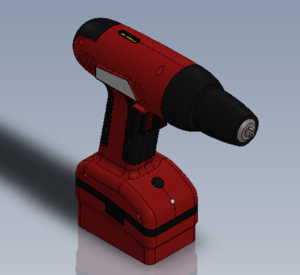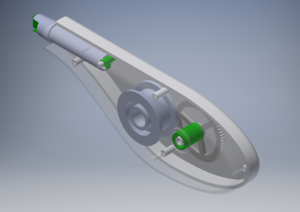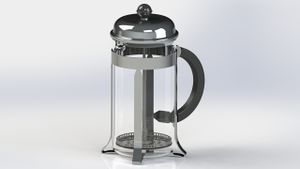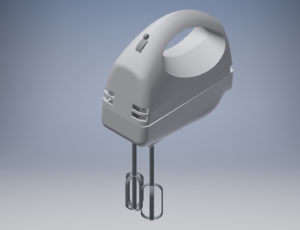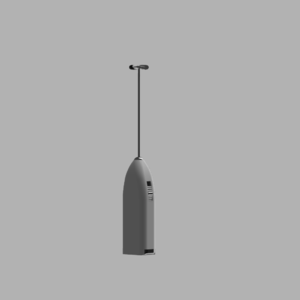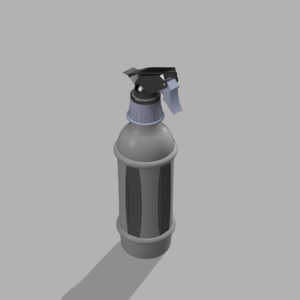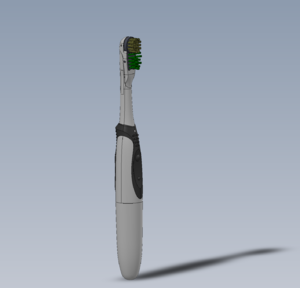Difference between revisions of "Virtual Product Dissection"
| Line 94: | Line 94: | ||
= Assignment = | = Assignment = | ||
=== Individual Lab Report === | There is <b>NO</b> lab report for Lab 4. | ||
<!--=== Individual Lab Report === | |||
<!--The Lab 1 report should only include content on Lab 1B: Virtual Product Dissection. This means that Lab 1A: Introduction to Microsoft Office and Lab 1C: Introduction to 3D Printing should not be discussed in the lab report. For guidance on the first report, the assignment questions below have been organized into the sections in which they should appear in the report. In future lab reports, the judgement must be used to determine which section of the report should address each question.--> | <!--The Lab 1 report should only include content on Lab 1B: Virtual Product Dissection. This means that Lab 1A: Introduction to Microsoft Office and Lab 1C: Introduction to 3D Printing should not be discussed in the lab report. For guidance on the first report, the assignment questions below have been organized into the sections in which they should appear in the report. In future lab reports, the judgement must be used to determine which section of the report should address each question.--> | ||
Follow the lab report guidelines laid out in the [[media: EG 1003 Writing Style Guide.docx|EG1003 Writing Style Guide]] in the <i>Technical Writing</i> section of the manual. | Follow the lab report guidelines laid out in the [[media: EG 1003 Writing Style Guide.docx|EG1003 Writing Style Guide]] in the <i>Technical Writing</i> section of the manual.--> | ||
<!--*Abstract--> | <!--*Abstract--> | ||
Revision as of 03:25, 12 February 2021
Objective
The objective of this lab is to evaluate the functional design of a product and apply the discovered characteristics of that product to a new design. Product dissection is a type of reverse engineering that reveals how products work and can be used as a tool for design inspiration. The goal is to design an innovative water toy for use by kids aged 4-6. The toy must be safe and fun to use.
Overview
Product dissection is often performed in industry and academia to uncover opportunities for redesign. Designers take apart and analyze all components of a product to understand its structure and properties. Through understanding the product, design opportunities can be uncovered and applied to the redesign of a product. The goal of dissection is to improve the functionality, maintainability, and reliability of a product through the examination, study, capture, and modification of other existing products (Stanley, 2019).
Engineering Design Process
The engineering design process is used to systematically collect and analyze data on a product’s inner workings and make decisions to improve it or create a new product or service. There are a number of published engineering design processes, but the majority of them contain the same elements. As seen in Figure 1, the steps of the engineering design process include identifying the needs and assumptions, researching the problem, brainstorming, selecting a solution, prototyping, testing, and improving
Product dissection is an important tool to inform decisions in the researching, imagining, and planning stages. In particular, the “imagination” step, also referred to as brainstorming or ideation, can benefit from taking the elements of another product and applying them to a new design. In this lab, it is essential to ask about and identify the needs and constraints of the design. Future labs will cover prototyping, testing, and redesigning.
Design Fixation
Design fixation is a problem that engineers and computer scientists experience when they have preconceived notions of or create an initial idea for a design and cannot conceive of alternatives. Some methods to overcome design fixation include product dissection, design heuristics, SCAMPER, and brainstorming. Brainstorming is the idea generation that occurs during the conceptualization phase of the design process. Design heuristics and SCAMPER are methods that use modifying verbs to inspire alternative solutions. Product dissection uses the design characteristics of existing products and applies them to a new design.
Reverse Engineering
Reverse engineering is the process of reproducing a product's specifications by the examination of the product's components and functionality. Hardware reverse engineering involves product dissection to see how a product works. For instance, if a processor manufacturer wants to see how a competitor's processor works, the company can purchase the processor, disassemble it, and then make a new processor similar to it (What Is, 2003).
Software can also be reverse engineered. Reverse engineering software typically involves taking a program’s machine code (the compiled code) and converting it into a more human readable format. It can also be used to obtain the original source code or determine the file structures the program uses, when the source code is lost or unavailable. For example, when a project is reactivated, after being dormant for years, with the aim of adding new features to a product, the original design documentation may have been lost. The aim is to understand how a program functions in order to identify deeper issues, and thus find ways of fixing them. Reverse engineering software to copy it constitutes a copyright violation and is illegal (What Is, 2003).
Design Considerations
- Design an innovative water toy for use by kids aged 4-6
- The toy must be safe to use and fun
- Incorporate the dissected product's design functional characteristics below where applicable:
- Power supply/energy source - how is power supplied to the device?
- Primary motion - how is mechanical motion (rotation, translation, etc.) achieved in the device?
- Energy flow - how is power transferred to create motion in the device
- Form and outer body - how does the user interact with the outer components of the device?
- Take screenshots of every product component analyzed
Materials and Equipment
- Solidworks eDrawings (free download here for Windows and Mac) (download eDrawings Viewer)
- Product dissection files
- virtual product dissection handout
- Any materials needed for hypothetical design of a water toy
Procedure
1. Creativity
Creativity is an important part of the engineering design process and it is important to start brainstorming in a creative mindset. A piece of paper and a pencil, or note app on a device of choice should be used to complete the paper clip ideation activity.
Paper Clip Ideation:
- Take out a piece of paper and a pencil, or a note app on a device of choice
- Write down as many alternative ways to use a paperclip as possible (2 minutes)
- After the timer has gone off, count the number of ideas generated as a group
- Identify the greatest number of ideas generated and share any ideas that were not mentioned, including any new ideas
2. First Idea Generation Session
List all ideas for the water toy on paper. Focus on designing both a fun and safe toy, but no ideas are too wild or off the table. These ideas will be used to build upon after the dissection activity. This brainstorming session is performed individually and should follow the rules of brainstorming.
- No (self) judgment
- Encourage wild ideas
- Stay focused on the topic
- Be visual
- Go for quantity
- Combine & improve ideas
3. Product Dissection Overview
Product dissection is an idea generation method. Product dissection is often performed in industry and academia to uncover opportunities for redesign and inspire new design ideas. The virtual products will be taken apart and analyzed to understand all components, their structure, and their properties. This analysis will be used to find ways to improve the water toy ideas and/or be inspired for new design ideas. The goal is to improve the functionality, maintainability, and reliability of a product through the examination, study, capture, and modification of existing products. It can also inspire new design ideas by drawing inspiration from products in different design domains. It is ideal to dissect products outside of the area of design. For example, if the task is to design a new electric toothbrush, then it is best to dissect any product that is not a toothbrush. Watch the short tutorial video for SolidWorks eDrawings for instruction on how to use product dissection tools in the software.
4. Product Dissection Activity
A virtual product dissection handout is provided for documentation. Components that are analyzed or used for the design of the water toy should be documented by taking a screenshot and pasting in the handout. Deciding which product to dissect should be done in project groups, and each member should dissect a different product. The available product models can be found in Figures 2 through 9 by clicking on the image or link to download.
5. Second Idea Generation Session
A second idea generation session will be used to build on ideas for the water toy based on the outcomes from the product dissection. Draw specific design ideas for the water toy on the virtual product dissection handout, focusing on creating both a fun and safe toy. These ideas may stem from the First Idea Generation Session or be completely new. Write down all the new ideas. Perform this idea generation session individually and follow the rules of brainstorming.
- No (self) judgment
- Encourage wild ideas
- Stay focused on the topic
- Be visual
- Go for quantity
- Combine & improve ideas
6. Reflection
Share all ideas for design and redesign.
Assignment
There is NO lab report for Lab 4. Follow the lab report guidelines laid out in the EG1003 Writing Style Guide in the Technical Writing section of the manual.-->
- Briefly summarize the exercise and its results
- Define product dissection and explain its uses
- Define design fixation
- Explain the engineering design process
- Define and explain the importance of idea generation
- Discuss the importance and use of SolidWorks eDrawings
- Describe the steps taken for the initial ideation of the water toy.
- Describe the product dissection process and the steps taken in Solidworks eDrawings. Discuss how viewing the tutorial contributed to your reasoning
- Describe the product dissection and functional characteristics observed including screenshots of the following:
- Power supply/energy source
- Primary motion
- Energy flow
- Form and outer body
- Discuss observations from the paperclip exercise and explain how it relates to the engineering design process
- Include all supporting documents like pictures and worksheets used during the lab
- Describe how the product design changed from before dissection to after
- During product ideation did design fixation impact any parts of the product? What negative impact did this have on the design?
- Was it useful to dissect multiple products?
- Was it useful to dissect a product different from the one you designed?
- What possible improvement can be made to this lab?
- Discuss what part of the lab you completed for your group and why it was important to the overall experiment.
Remember: Lab notes are required to be taken. Experimental details are easily forgotten unless written down. EG1003 lab notes paper can be downloaded and printed from the EG1003 website. Use the lab notes to write the Procedure section of the lab report. At the end of each lab, a TA will scan the lab notes and upload them to the Lab Documents section of the EG1003 website. One point of extra credit is awarded if the lab notes are attached at the end of the lab report. Keeping careful notes is an essential component of all scientific practice.
Team PowerPoint Presentation
There is no team presentation for Lab 4.
References
Starkey, E., Hunter, S., & Miller, S. Learning with Product Dissection. https://www.engr.psu.edu/productdissection/. Retrieved 2019. This work is supported by the National Science Foundation through grant number 14630009.
TeachEngineering. The Engineering Design Process. https://www.teachengineering.org/k12engineering/designprocess. Retrieved 2019. The source of this material is the TeachEngineering digital library collection at www.TeachEngineering.org. All rights reserved.
What Is website. TechTarget Network. https://searchsoftwarequality.techtarget.com/definition/reverse-engineering Retrieved July 29th, 2003.
| ||||||||

